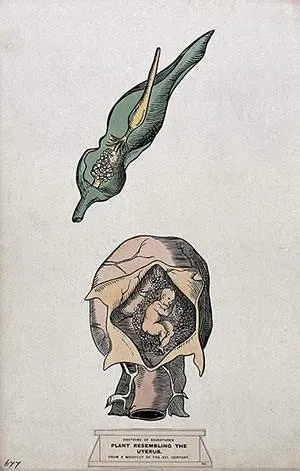The Savvy Tracks
BLOG

The Doctrine of Signatures: Are Plants Trying to Tell Us Something?
The Doctrine of Signatures: Are Plants Trying to Tell Us Something?
There are many things in this world that we do not understand. Plants are one of them. They are always there, growing and thriving, seemingly without any effort on our part. And yet, they hold so many secrets. Could it be that they are trying to tell us something?
I grew up on a farm in Kent, England. Throughout my childhood, I was lucky enough to learn about plants and their healing properties from the older folk of the village. They would gently and reverently cradle the flower or leaves in their gnarled, wise hands and tell me how the plant got its name, and how it could be used for healing and practical purposes for the good of humankind. They told me captivating stories which immersed me in what they probably already knew would be my life purpose.
Today, I believe that plant medicine is a gentle and effective way to lead humanity on a greater quest than it has ever experienced. To help us on our mission, I aim to give all healing plants a voice so that their wisdom can be heard by all. These are challenging times, but if we listen to the plants, they can guide us through them.

What is the Doctrine of Signatures?
Many years ago, I attended my first herbal medicine lesson where I was introduced to the Doctrine of Signatures. This doctrine explains that plants communicate with us through their appearances. For example, a plant with red flowers may be communicating that it is good for heart health. This lesson stuck with me throughout my life as a natural health practitioner and has led me to believe that plants are essential components of our health and well-being.
The Doctrine of Signatures dates back to the ancient time of Dioscorides and Galen. Within it, you’ll find some information that is quite groundbreaking. It states that plants that resemble various parts of the body can be used to treat ailments of those body parts.
In other words, healing plants demonstrate a “signature” by resembling the body part that they treat. At the time of its release, the Doctrine of Signatures met the people of the world with great momentum. It made its way through various cultures of the world and plants were applied to traditional medicinal techniques.
Thanks to the Doctrine of Signatures, ancient people knew intuitively that various plants could heal certain ailments. For instance, a plant that breaks apart rocks as it grows can relieve kidney stones. Another example is using the Alkanet’s viper-shaped seeds to remedy snake bites or the coiled shoots of the Scorpious herb to soothe scorpion stings. Over time, the Doctrine of Signatures has become an indispensable tool for health and wellbeing in various communities and civilizations throughout the world. Even today, various experts still refer to the Doctrine of Signatures to further their research on the impact that plants can have on our health and wellness routines.
How to Apply The Doctrine of Signatures
Many people believe that the doctrine of signatures is a guide to identifying which plants can be used for medicinal purposes. However, this is only part of the story. The doctrine of signatures can also be used to determine how plants can support us in other ways.
There is no one-size-fits-all answer when it comes to the question of how to apply the doctrine of signatures. However, if we take a closer look at the traditional uses of plants, we can see that they can offer us a wealth of support and guidance, especially in this 21st century and beyond.
While the Doctrine of Signatures is not a foolproof method of identifying a plant's purpose, it can be a helpful tool in understanding the vast array of medicinal plants out there. So next time you're curious about a plant, take a closer look at its signature!
If you have any questions about plant medicine consultations, coaching and courses I teach, you can find out more here.
© Copyright 2023 Health Savvy Society